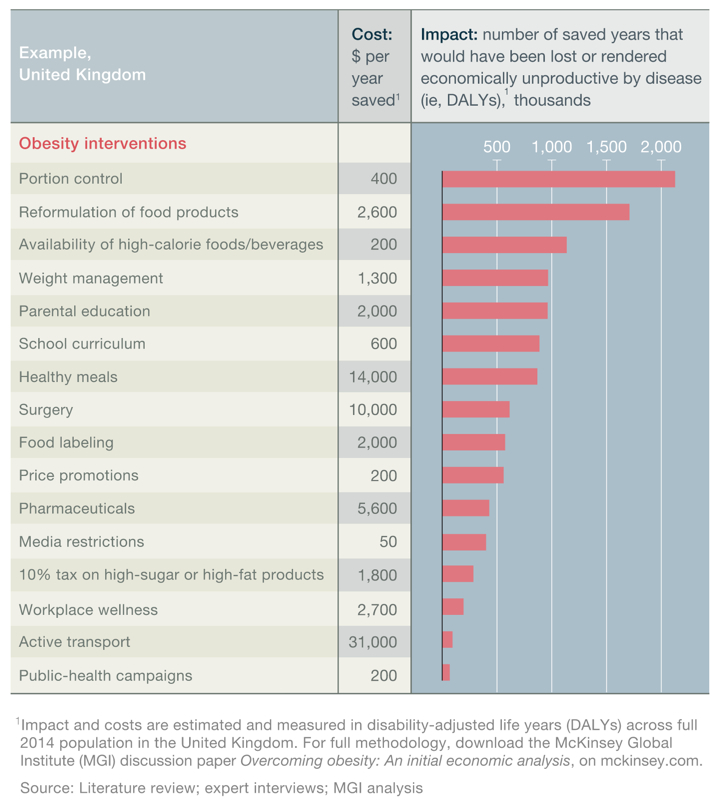|
![]()
| Reduce portion sizes How1 #366475 Food producers, restaurants and workplace canteens should reduce average portion sizes (including removing extra-large "super-size" single-serve portions from packaged food ranges and menus). | Cost-effective interventions to reduce obesity in the UK 
|
+Verweise (2) - VerweiseHinzufügenList by: CiterankMapLink[2] Portion size and obesity
Zitieren: M. B. Livingstone, L. K. Pourshahidi
Publication info: 2014 November, 14, Adv Nutr. 2014 Nov 14;5(6):829-34. doi: 10.3945/an.114.007104
Zitiert von: David Price 0:13 AM 4 December 2014 GMT
Citerank: (1) 399581Reduce portion sizesFood producers, restaurants and workplace canteens should reduce average portion sizes (including removing extra-large "super-size" single-serve portions from packaged food ranges and menus).565CA4D9
URL: | | Auszug - Portion size is a key environmental driver of energy intake, and larger-than-appropriate portion sizes could increase the risk of weight gain. Multiple acute, well-controlled laboratory studies, supported by data from free-living settings, demonstrated that portion size has a powerful and proportionate effect on the amount of food consumed. Of particular importance is that bouts of overeating associated with large portions are sustained and not followed by a compensatory reduction in energy intake. The positive effect of portion size on energy intake was demonstrated for different types of foods and beverages, and is particularly pronounced with energy-dense foods. The predisposition to overeat in response to large portions is pervasive and occurs regardless of demographic characteristics, such as socioeconomic status, age, body mass index, and sex. Secular trends toward greater availability of large portions, coupled with value-size pricing, effectively distorted consumption norms and perceptions of what is an appropriate amount to eat. Nevertheless, although a direct causal link between portion size and obesity remains to be established, advice to moderate portion sizes, especially of energy-dense foods, is presently the cornerstone of most weight management advice. Although many strategies have been proposed to counteract the deleterious effects of portion size, there are few data indicating which are likely to be acceptable in the medium- to long term. Further research is urgently needed to establish what types of interventions targeted at portion size are likely to be effective, in what settings, and among which target groups. |
|
|